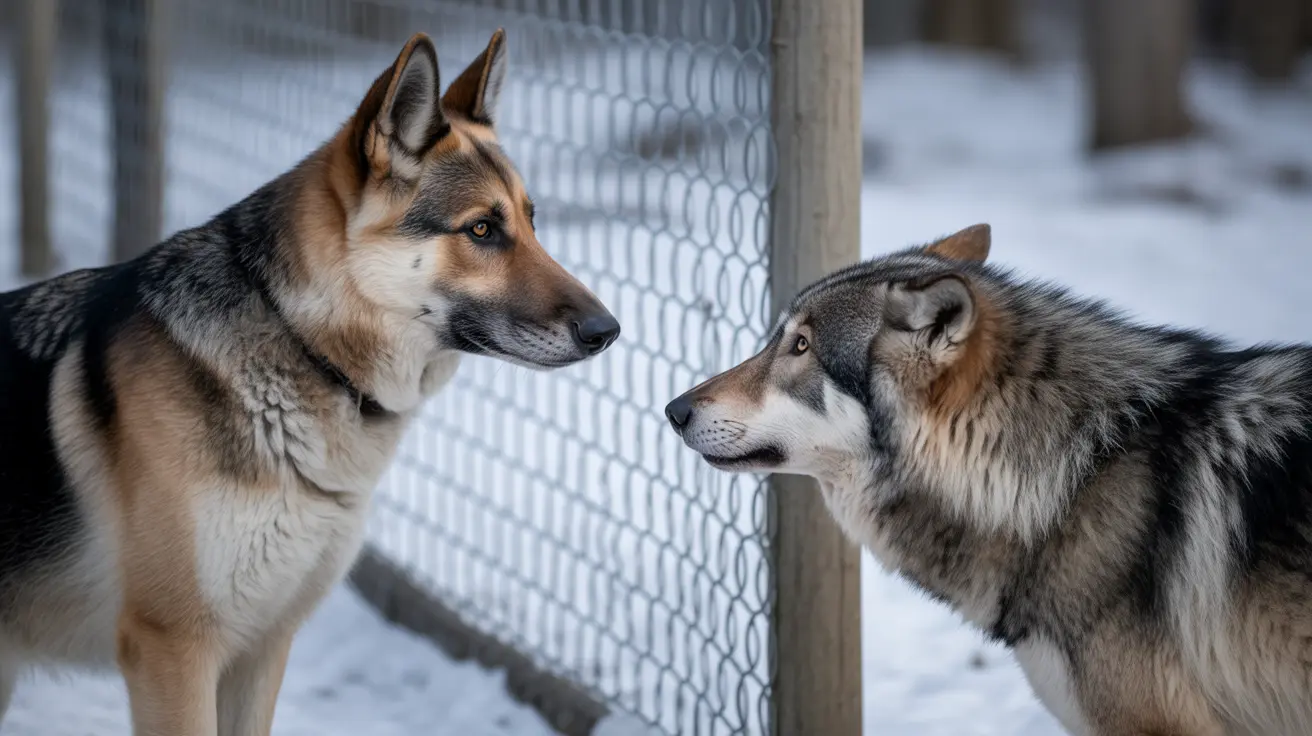The Genetic Connection Between Wolves and Dogs
The possibility of wolves and dogs mating is a fascinating topic that stems from their remarkably close genetic relationship. As members of the same species (Canis lupus), with dogs being a subspecies (Canis lupus familiaris), these animals share an astounding 99.96% of their DNA. This genetic similarity makes successful breeding between wolves and dogs not just possible, but relatively straightforward from a biological perspective.
Their genetic compatibility is further supported by both species having identical chromosome counts – 78 chromosomes arranged in 39 pairs. This matching genetic structure allows them to produce viable offspring, known as wolfdogs or wolf-dog hybrids, which are typically fertile themselves – unlike many other hybrid animals such as mules.
Natural Occurrence vs. Human-Managed Breeding
While wolves and dogs can technically mate in the wild, such occurrences are relatively rare. Natural breeding between these species typically happens in areas where domestic dogs and wild wolf populations overlap, but several factors make these encounters uncommon. Wolves maintain strict pack structures and specific breeding seasons, while domestic dogs can breed year-round and have different social behaviors.
Most modern wolfdogs result from deliberate breeding programs where humans pair specific dog breeds (commonly Siberian Huskies, German Shepherds, or Alaskan Malamutes) with captive wolves. These breeding efforts are often aimed at creating exotic pets or developing animals with particular physical or behavioral traits.
Physical and Behavioral Characteristics of Wolfdogs
Wolfdog hybrids exhibit a wide range of physical and behavioral traits that can vary significantly even within the same litter. Common physical characteristics include:
- Thick double coats
- Upright, pointed ears
- Elongated muzzles
- Variable coat colors, including black (a trait traced to dog genetics)
- Generally larger size than most domestic dogs
Behaviorally, wolfdogs often display a complex mix of both wolf and dog traits, which can include:
- Strong pack mentality
- High prey drive
- Independent nature
- Variable levels of human sociability
- Complex territorial behaviors
Challenges and Considerations of Wolfdog Ownership
Despite their exotic appeal, wolfdog ownership presents significant challenges. These animals require specialized care, extensive socialization, and specific living conditions that many potential owners are not prepared to provide. Responsible ownership demands:
- Secure, spacious enclosures
- Expert-level animal handling experience
- Understanding of both wolf and dog behavior
- Significant time commitment for training and socialization
- Access to veterinarians experienced with wolf-dog hybrids
Conservation Impact and Genetic Concerns
The interbreeding of wolves and dogs raises important conservation concerns. When wolf-dog hybridization occurs in the wild, it can threaten pure wolf populations by introducing domestic dog genes that may reduce survival fitness in natural environments. This genetic infiltration has already contributed to the decline of some regional wolf populations, particularly in areas where human settlements encroach on wolf territories.
Frequently Asked Questions
Can wolves and dogs mate in the wild?
Yes, wolves and dogs can mate in the wild, though it's relatively rare due to behavioral differences and territorial nature of wolves. Most such matings occur in areas where domestic dogs and wild wolf populations overlap, but the majority of modern wolfdogs come from controlled breeding programs.
What are the common behavioral problems faced by wolfdog owners?
Common behavioral issues include strong prey drive, difficulty with training, escape attempts, territorial marking, and unpredictable responses to humans. These animals may also struggle with confinement and show resistance to traditional dog training methods.
How do I determine if my pet is a true wolfdog hybrid?
True wolfdog identification requires genetic testing, as physical appearance alone can be misleading. Many animals marketed as wolfdogs are actually domestic dogs with wolf-like features. Professional phenotyping by experts familiar with wolf characteristics can also help determine wolf content.
What are the legal implications of owning a wolfdog in different regions?
Wolfdog ownership regulations vary widely by location. Many areas restrict or ban wolfdog ownership outright, while others require special permits. It's essential to check local laws, as violations can result in fines or mandatory surrender of the animal.
What kind of care and training does a wolfdog require to thrive?
Wolfdogs need extensive space, secure containment, specialized diets, and experienced handling. They require early socialization, consistent training using positive reinforcement methods, and activities that satisfy both their physical and mental stimulation needs.






